The Transformation from Static Budgets to Intelligent Forecasting
The financial sector has undergone a profound transformation, shifting from traditional timesheets and static budgets to dynamic, data-driven predictive models. This evolution is propelled by advancements in artificial intelligence, machine learning, and foundational models that enable more accurate, responsive, and comprehensive financial forecasting. As organizations embrace these new technologies, they are enhancing decision-making, risk management, and strategic planning, creating a new era of finance that is fast, flexible, and highly intelligent.
Foundation Models and Their Role in Time Series Prediction
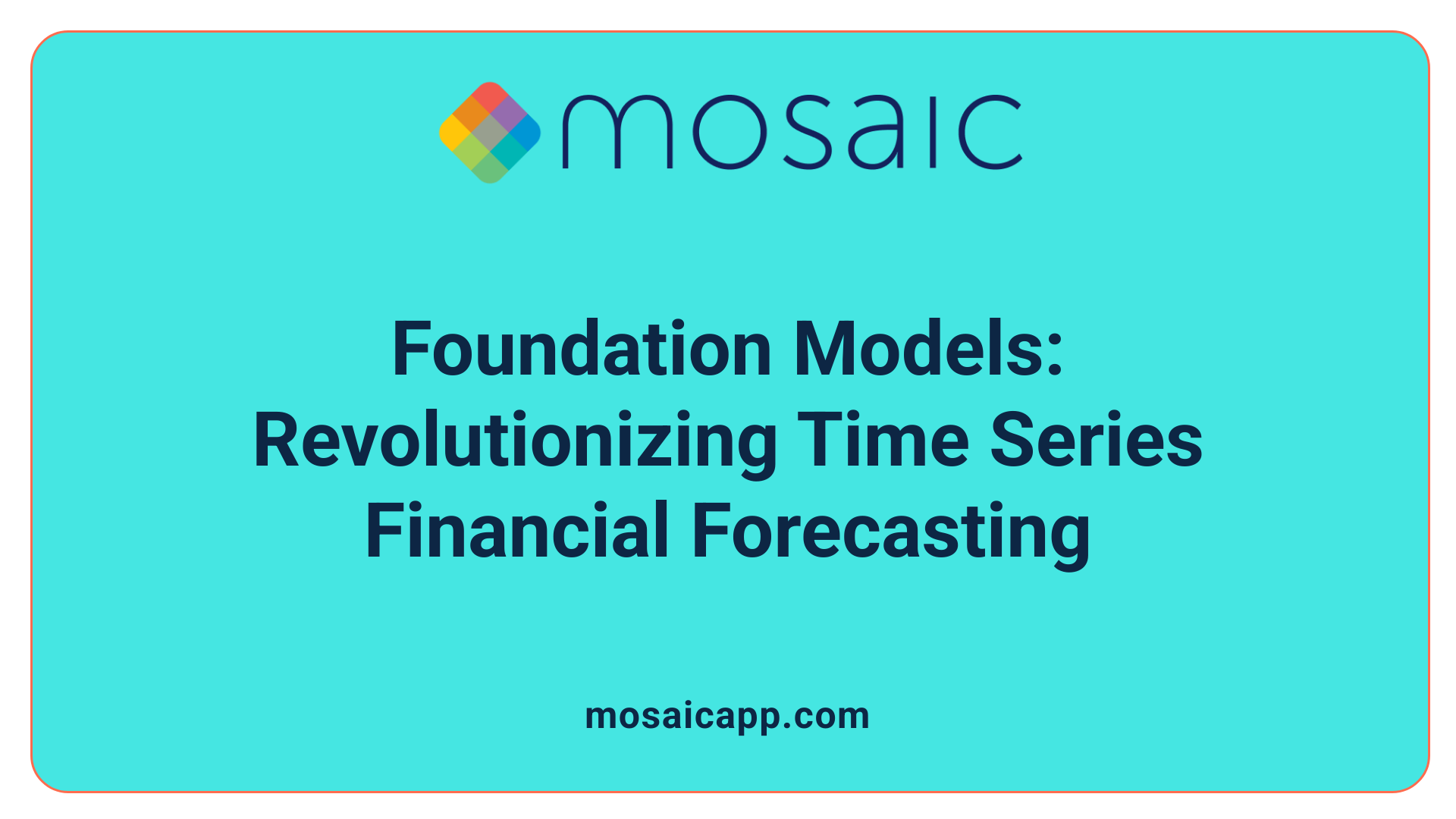
How are foundation models transforming financial forecasting and trend detection?
Foundation models for time series are reshaping the landscape of financial prediction by leveraging large-scale pre-trained AI systems that learn from a wide array of data sources. These models are trained on multi-domain datasets, including financial, healthcare, and energy time series, enabling them to recognize universal patterns applicable across sectors.
The use of self-supervised learning techniques allows these models to extract meaningful insights without needing task-specific labels during pretraining. This approach enhances their ability to generalize across different data types and contexts.
Advanced architectures like transformers combined with innovative pretraining methods such as TimeCLR outperform traditional models. They excel at capturing complex temporal dependencies—vital for understanding market movements and detecting subtle trend shifts.
One of the main advantages of these foundation models is their capacity to integrate multiple data modalities, providing a more comprehensive view of market signals. This integration improves early warning indicators and allows for finer detection of market trends.
In summary, foundation models are significantly enhancing the accuracy and speed of financial forecasting and trend detection. They enable analysts and institutions to make more informed decisions, identify emerging risks earlier, and adapt swiftly to changing market dynamics.
Combating Financial Data Complexities with Hybrid AI Models
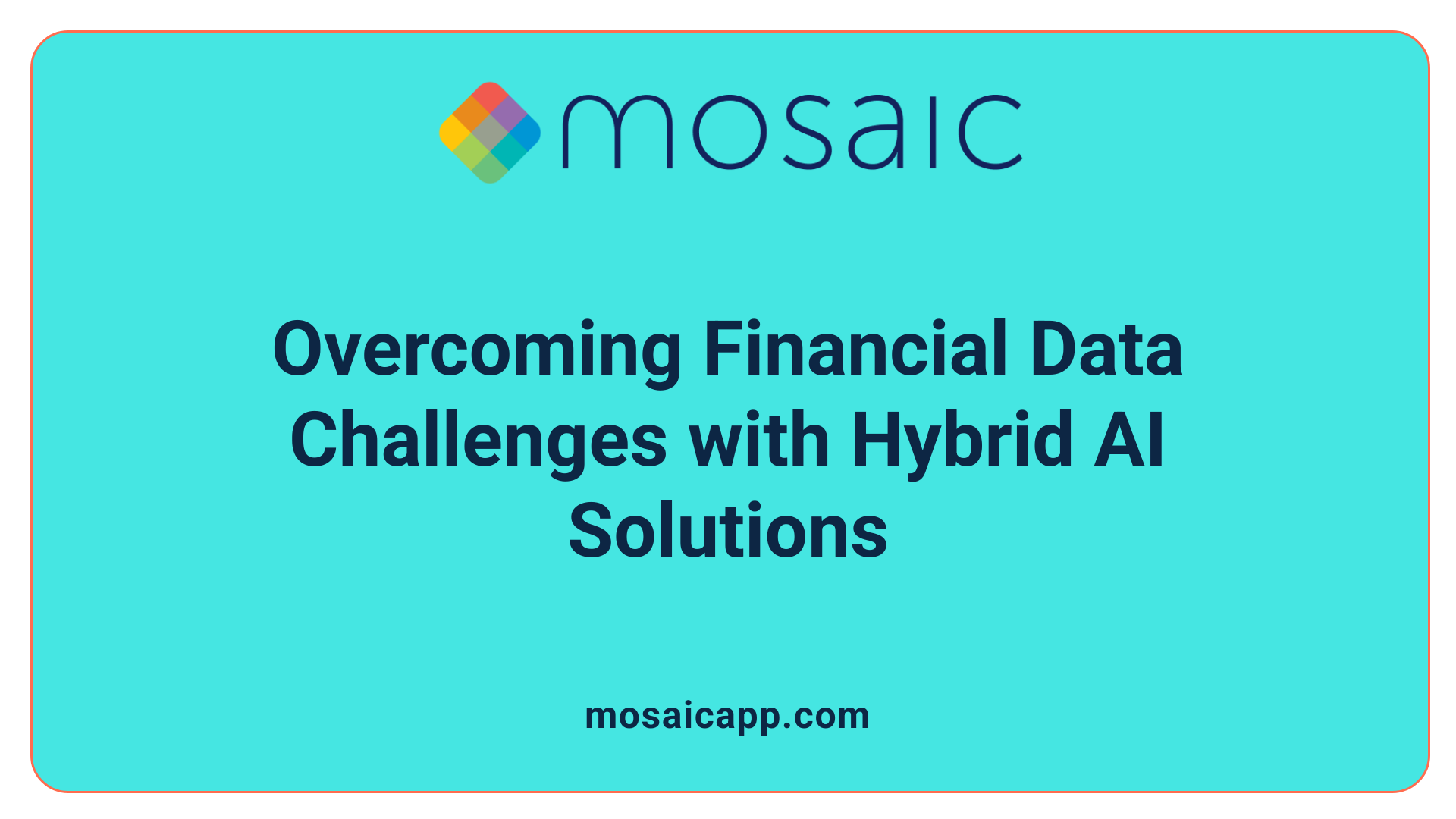
What challenges are posed by non-linear, non-stationary, noisy financial data?
Financial data often exhibits complex behaviors that make prediction difficult. These include non-linearity, where relationships between variables are not straightforward; non-stationarity, with statistical properties changing over time; and noise, representing random fluctuations that obscure true signals.
Traditional forecasting methods struggle to adapt to these issues, leading to less accurate and unreliable predictions. As a result, more sophisticated approaches are needed to handle such complexities effectively.
How do hybrid models blend statistical and machine learning techniques?
Hybrid models combine multiple analytical methods to leverage their respective strengths. They typically start with a statistical or signal decomposition step, like ensemble empirical mode decomposition (EEMD), to break down the original data into simpler components.
These components are then processed using machine learning algorithms such as neural networks, support vector regression (SVR), and optimization techniques like genetic algorithms. This integration allows models to better capture the underlying patterns in challenging financial data.
What is ensemble empirical mode decomposition (EEMD)?
EEMD is a data-driven decomposition technique that isolates intrinsic mode functions from a complex signal. Unlike traditional methods, EEMD adds a small amount of noise to the data before decomposition, which helps prevent mode mixing.
The result is a set of simpler oscillatory modes that represent different frequency components of the original data. These modes make it easier for machine learning models to learn and predict the underlying patterns.
Which machine learning components are used in hybrid models?
Hybrid models often incorporate neural networks, support vector regression (SVR), and genetic algorithms.
- Neural networks excel at modeling non-linear relationships and identifying complex patterns.
- Support vector regression is effective for remaining robust in noisy environments and handling high-dimensional data.
- Genetic algorithms optimize model parameters and feature selection, improving overall accuracy.
Together, these components work synergistically to produce more accurate and reliable financial forecasts.
| Technique | Role | Advantage | Interaction with Other Components |
|---|---|---|---|
| EEMD | Decompose data | Simplifies complex signals | Creates inputs for machine learning models |
| Neural Networks | Capture non-linear patterns | Accurate in diverse conditions | Enhanced by EEMD features |
| Support Vector Regression | Handle noise | Robust in volatile data | Complements neural networks |
| Genetic Algorithms | Optimize parameters | Enhances model performance | Fine-tunes decomposition and ML models |
How do hybrid models improve financial time series predictions?
By decomposing complex financial signals into manageable components, hybrid models enable machine learning algorithms to focus on relevant features. This approach reduces the impact of noise and non-stationarity.
Experimental results demonstrate these models outperform standard techniques, with lower errors measured by mean squared error (MSE), root mean squared error (RMSE), and mean absolute error (MAE). In volatile markets, such hybrid models provide more stable and accurate forecasts, better informing financial decision-making.
Advancements in Predictive Analytics and Their Financial Impact
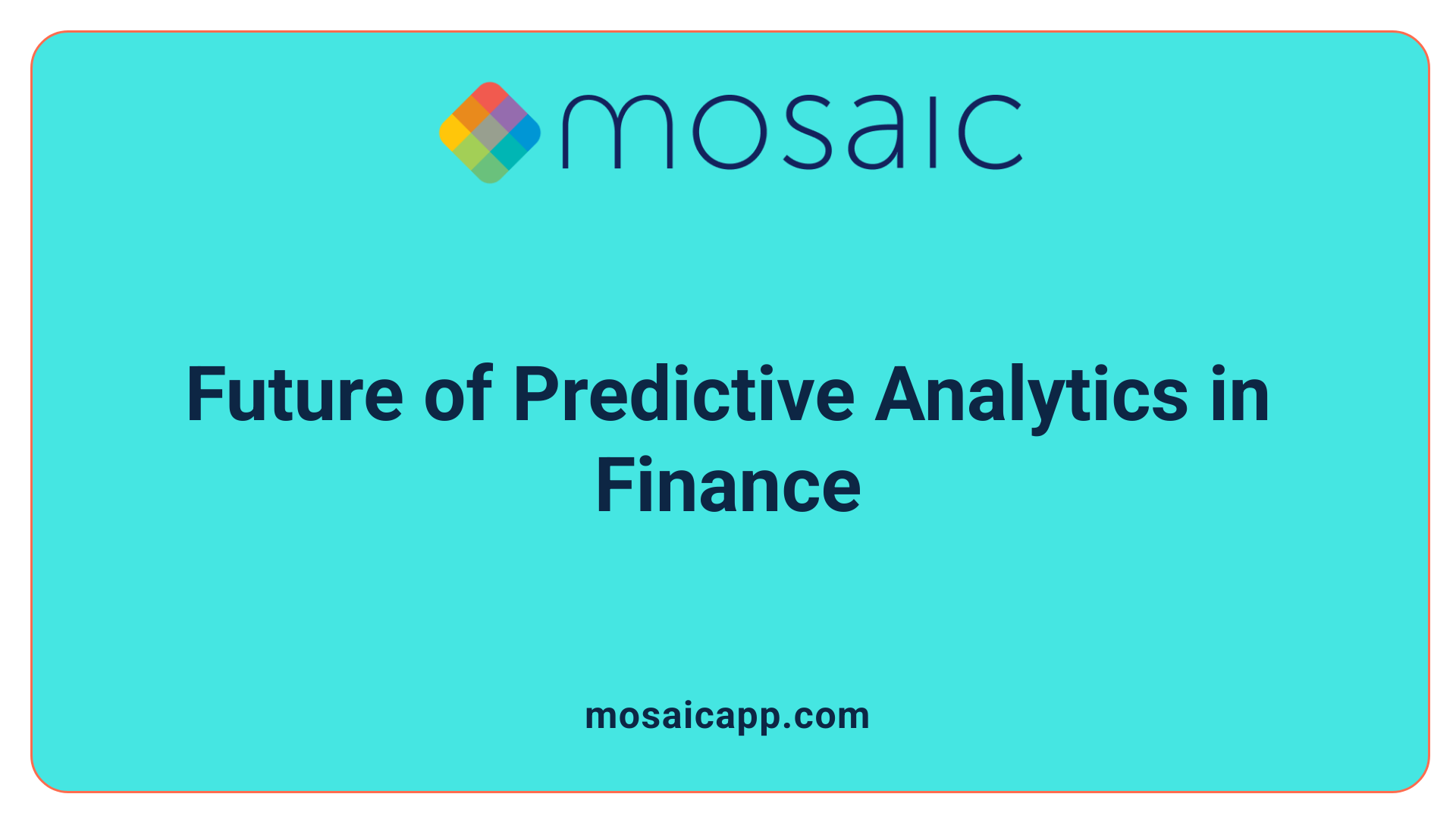
How do predictive models improve decision-making, risk management, and financial planning?
Predictive models play a crucial role in modern finance by offering accurate forecasts and simulating various scenarios. These insights enable financial professionals to make well-informed strategic choices and optimize resource use.
One of the most significant benefits is early risk detection. Models can flag potential issues such as fraud, market fluctuations, and credit defaults in advance. This proactive approach allows institutions to implement preventive measures swiftly, reducing potential losses.
In financial planning, predictive analytics enhances the accuracy of forecasts related to cash flows, investments, and operational costs. By analyzing historical data alongside real-time information, these models uncover hidden patterns and trends, leading to better-informed decisions.
Moreover, the integration of statistical, computational, and AI methods—such as machine learning—continues to improve predictive accuracy. These advanced models are embedded into decision support systems, providing instant insights and facilitating rapid responses to market changes.
Applications span across various critical areas, including credit scoring, fraud detection, investment prediction, and risk management. For example, banks leverage machine learning algorithms to assess customers' creditworthiness, while fraud detection systems monitor transaction patterns for suspicious activity.
The benefits extend beyond accuracy. Operational efficiency sees a boost as automation speeds up decision processes. Risks are managed more effectively, and institutions can proactively adapt to emerging trends. Overall, predictive analytics transforms traditional finance operations into agile, forward-looking systems that sustain competitive advantage.
Integrating Machine Learning and AI into Financial Operations
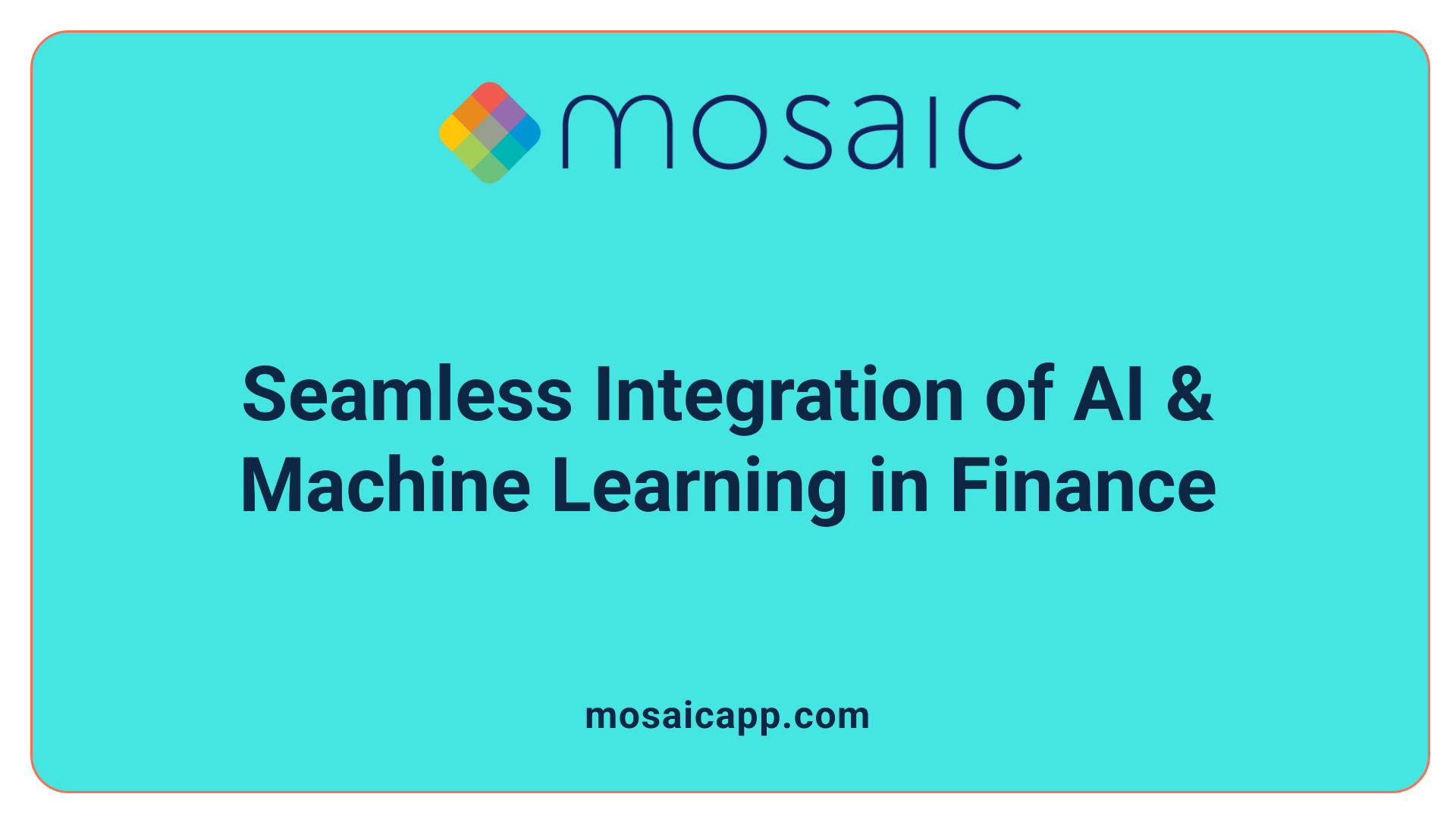
How are predictive modeling, machine learning, and artificial intelligence applied in finance?
In the financial industry, these advanced technologies are transforming traditional practices across multiple areas. They are widely used for credit scoring, helping banks and lenders evaluate borrower risk more accurately. Risk assessment models analyze vast data streams, including market trends and customer behavior, to identify potential vulnerabilities.
Fraud detection is another critical application. AI algorithms scrutinize transaction patterns in real time, quickly flagging suspicious activity and reducing financial losses. These models often incorporate unstructured data, such as news articles and social media posts, to improve prediction accuracy.
Beyond risk management, AI powers automated client services like robo-advisors and chatbots. These tools deliver personalized financial advice and customer support at scale, making engagements more accessible and efficient.
Real-time analytics enable organizations to adapt swiftly to market changes. Financial firms leverage AI-driven insights for strategic planning, regulatory compliance, and operational risk mitigation. The ability to analyze and respond to data instantaneously results in faster decision-making, cost reductions, and optimized resource allocation.
Application in Various Financial Domains
| Domain | Application Examples | Additional Details |
|---|---|---|
| Credit and Risk | Credit scoring, risk assessment, default prediction | Models analyze structured and unstructured data for accuracy |
| Fraud Prevention | Transaction monitoring, anomaly detection | Utilizes pattern recognition and real-time alerts |
| Asset Management | Portfolio optimization, market forecasting | Machine learning models predict asset movements efficiently |
| Customer Service | Chatbots, robo-advisors, personalized recommendations | Scalable, consistent customer engagement |
| Decision Support | Regulatory compliance, operational risk analysis | Continuous model updates enhance responsiveness |
Future Trends
The shift towards AI-driven financial operations emphasizes adaptive, cross-domain models capable of learning from diverse data sources. These systems are expected to become more transparent and explainable, fostering trust and regulatory compliance. Integrating unstructured data further enhances predictive capabilities, offering deeper market insights and early warning signals.
Financial institutions leveraging these technologies report improved efficiency, reduced operational costs, and heightened competitive advantage. As AI tools become more sophisticated and accessible, their role will expand in enabling smarter, faster, and more accurate financial decision-making.
Driving Forecast Accuracy with Recent Technological Innovations
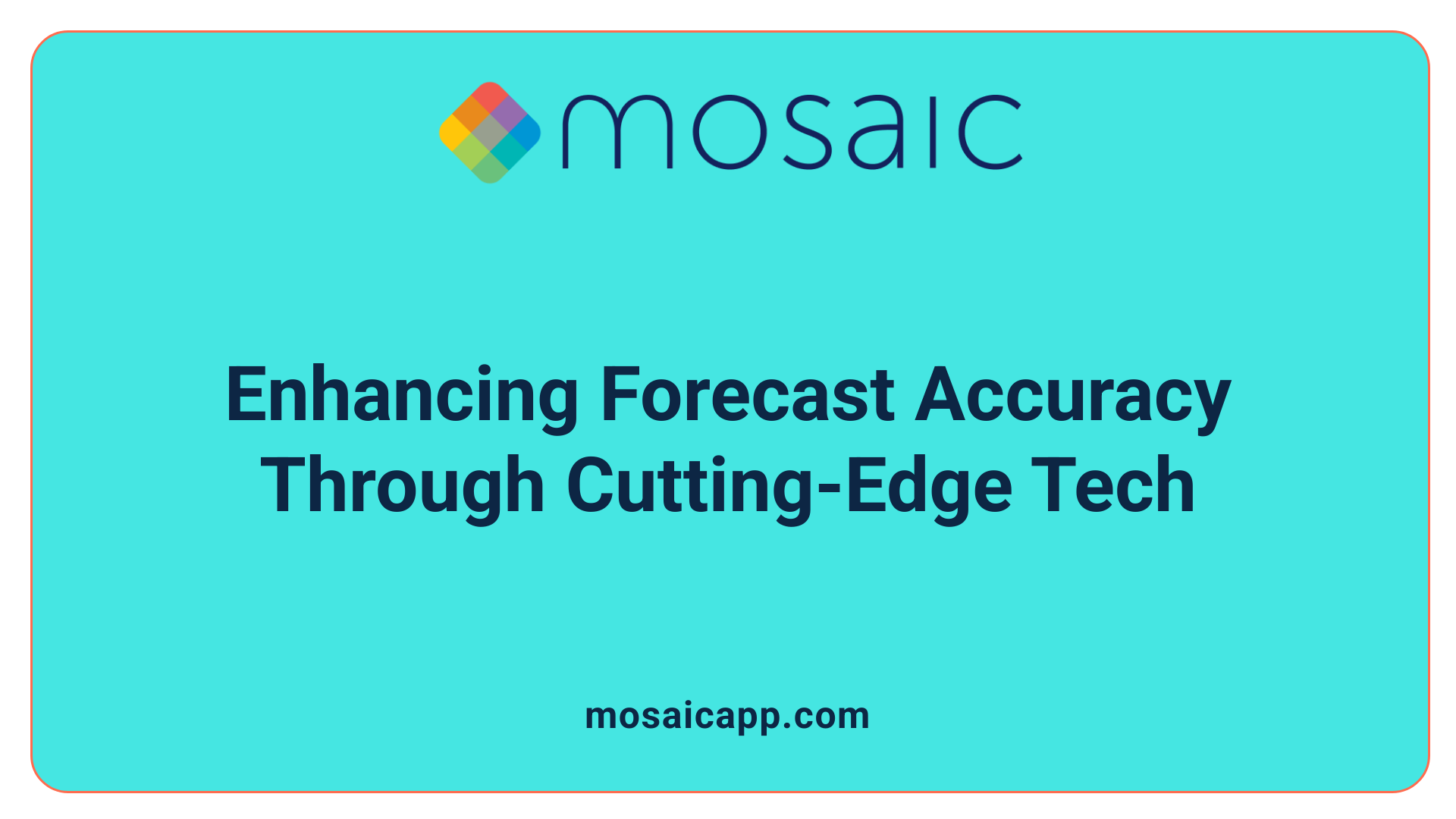
What are recent advancements in predictive analytics for finance?
Financial predictive analytics have seen remarkable progress driven by cutting-edge AI and machine learning techniques. Recent advancements include the development of deep learning models and hybrid algorithms, such as the WOA-STL-LSTM, which combine optimization methods, trend decomposition, and memory networks to improve forecast precision.
One notable trend is the integration of external data sources, like news articles, social media posts, and Google Trends. This broader dataset enriches market analysis, allowing models to incorporate real-world sentiment and macroeconomic signals.
Natural language processing (NLP) has advanced significantly, enabling sentiment analysis to evaluate market mood and predict potential shifts. Such insights help financial firms make more informed decisions quickly.
Additionally, the rise of explainable AI frameworks offers transparency into complex models, making it easier for analysts to understand and trust predictions. This transparency is particularly important for regulatory compliance and strategic decision-making.
Finance also benefits from using alternative data sources beyond conventional metrics. Satellite imagery, for example, provides real-time visual insights into economic activity, while customer spending patterns reveal micro-level market trends.
Together, these technological innovations make predictive analytics more accurate, adaptable, and responsive, empowering financial institutions to stay ahead of market changes and enhance decision quality.
Emerging Trends in Financial Time Series Prediction Technologies
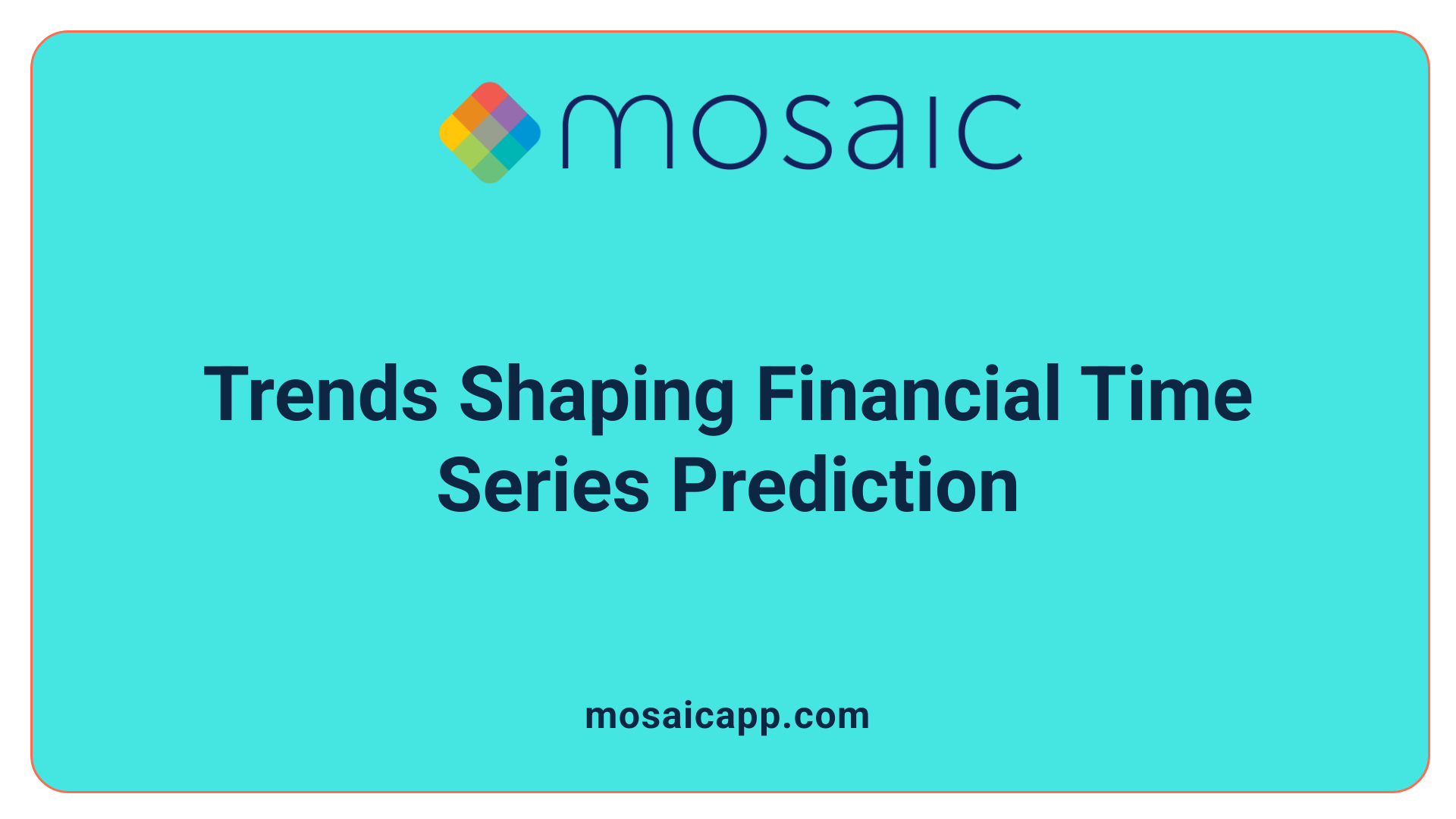
What technological trends are emerging in financial time series prediction?
Financial data analysis continues to evolve with the adoption of innovative technologies. One notable development is the integration of advanced deep learning models, such as the WOA-STL-LSTM architecture, which combines whale optimization algorithms with seasonal trend decomposition and Long Short-Term Memory (LSTM) networks. This approach enhances the model’s ability to detect complex patterns and optimize predictive accuracy.
Furthermore, there is a growing reliance on alternative data sources beyond traditional financial indicators. Social media activity, news sentiment analysis, and internet usage patterns are now incorporated into predictive models to increase robustness and adaptability, providing richer insights into market sentiment and potential turning points.
In addition, sophisticated analytical methods like fractal and multifractal analysis are gaining traction. Techniques such as Multifractal Detrended Cross-Correlation Analysis (MF-DCCA) allow researchers to uncover intricate cross-correlations within financial time series, capturing the complex, self-similar structures often present in market data.
Probabilistic modeling and scenario-based techniques, including Monte Carlo simulations, are increasingly employed to manage uncertainty effectively. These methods provide a framework for risk assessment and help models adapt swiftly to shifting market dynamics, improving prediction reliability even during volatile or unprecedented events.
| Technology Trend | Description | Impact |
|---|---|---|
| WOA-STL-LSTM | Combines optimization algorithms, trend decomposition, and neural memory networks | Improves pattern recognition and parameter tuning |
| Alternative Data | Utilizes social media, news, internet data | Enhances model robustness and market sentiment analysis |
| Fractal Techniques | Uses MF-DCCA for cross-correlation analysis | Captures complex, self-similar market structures |
| Probabilistic Models | Applies Monte Carlo simulations | Supports uncertainty quantification and scenario analysis |
As these technological trends mature, they promise faster, more accurate, and adaptable financial prediction models, empowering traders and analysts to navigate increasingly complex markets with greater confidence.
Transformative Power of AI and Foundation Models in Forecasting
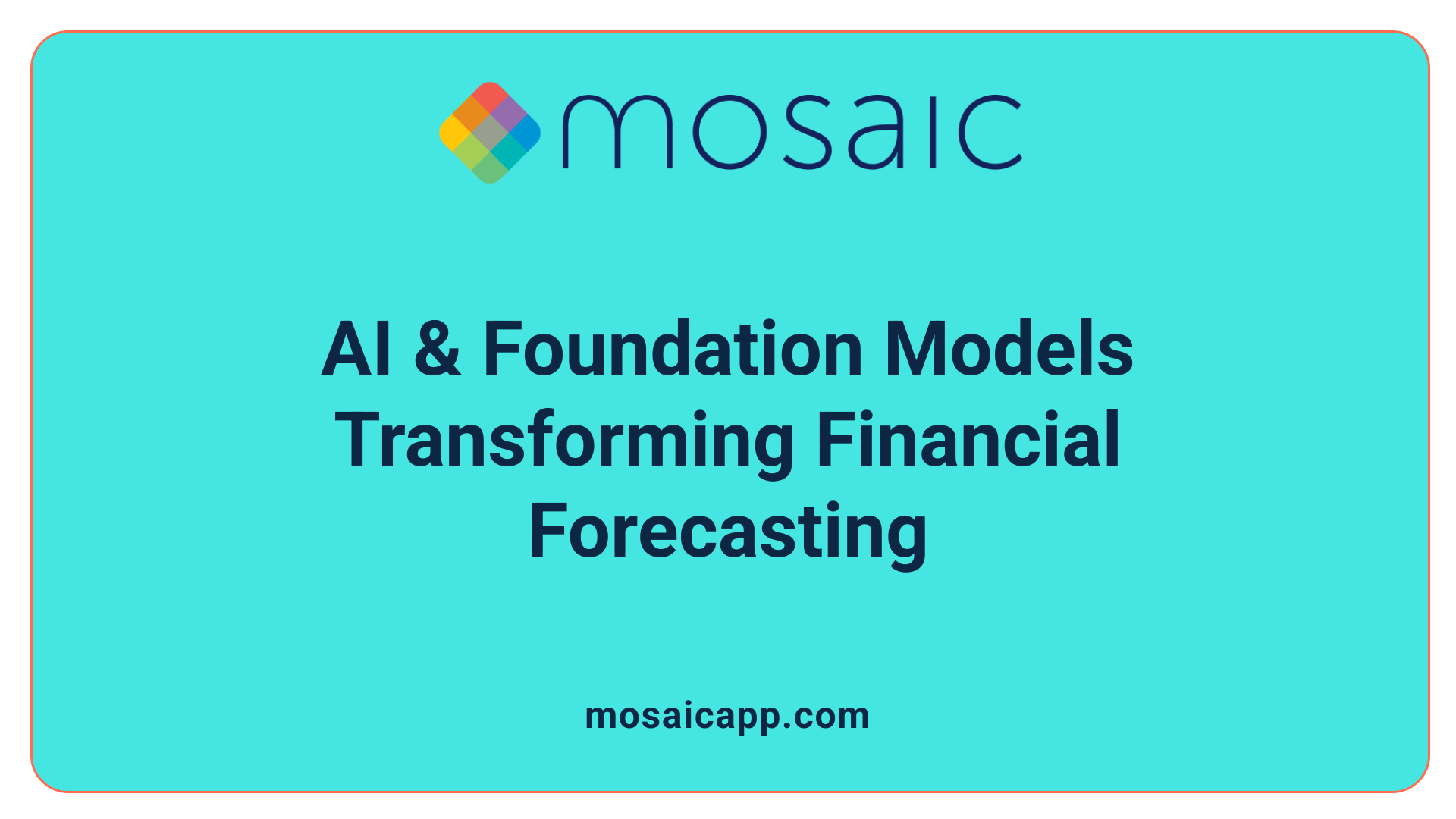
How are AI and foundation models transforming financial forecasting and trend detection?
AI and foundation models are significantly reshaping the landscape of financial prediction by offering advanced capabilities that traditional models can't match. These large pre-trained models learn from a wide array of multi-domain datasets, including financial, healthcare, and energy data, leveraging self-supervised learning techniques. This extensive training enables them to identify complex, non-linear patterns in time series data, which are common in financial markets.
One of the major advantages is their ability to automatically recognize intricate patterns within large datasets, reducing the reliance on manual feature engineering. They also facilitate the integration of diverse data modalities—such as news articles, social media feeds, and economic indicators—allowing for a more holistic view of market signals.
Furthermore, foundation models excel in zero-shot and few-shot learning scenarios. This means they can quickly adapt to new assets, market conditions, or unforeseen events with minimal additional training. This agility is crucial in finance, where rapid market shifts are common.
These models also enhance trend detection and early warning capabilities. By analyzing broad data streams in real time, they can identify early signals of market shifts or potential crises, giving financial institutions vital lead time for decision-making.
Ultimately, AI and foundation models empower finance professionals with more accurate, timely insights, helping them to make smarter investment decisions, manage risks better, and seize emerging opportunities. Their ability to perform complex analysis, adapt swiftly, and process multi-modal data points to a future where predictive accuracy continues to improve and market signals become easier to decipher.
Future Directions and Research in Financial Prediction Models

What are the latest research developments and future directions in financial prediction models?
Recent advancements in financial prediction models are centered around enhancing accuracy, interpretability, and adaptability. Researchers are increasingly applying sophisticated deep learning techniques, such as transformer architectures and ensemble methods, to capture complex market dynamics more effectively. These models can integrate diverse datasets, including unstructured data like news articles and social media posts, to improve decision-making.
A notable trend is the incorporation of alternative data streams, such as satellite imagery, customer transaction patterns, and macroeconomic indicators. These enriched datasets provide broader context and enable predictive models to remain relevant in rapidly changing environments.
Looking ahead, a significant focus is on developing explainable AI systems. These aim to offer transparency in model decisions, satisfying regulatory requirements and fostering trust among users. Additionally, researchers are working on creating adaptive, continuous learning models that can update in real-time as new data arrives, thus maintaining high performance without frequent manual retraining.
Another promising direction involves causal inference techniques. By understanding the cause-and-effect relationships within financial data, these models can offer deeper insights into market drivers, leading to more robust and resilient predictions.
In conclusion, ongoing research strives to make financial prediction models more accurate, understandable, and capable of adapting to turbulent markets—ultimately supporting smarter, more reliable financial decision-making.
Charting the Future of Finance with Predictive Innovation
The financial industry is rapidly evolving, driven by groundbreaking advances in AI, predictive analytics, and foundational models. Moving away from static, manual processes toward intelligent, automated systems enables financial institutions to operate with greater agility, precision, and foresight. From hybrid models addressing financial data complexities to real-time analytics incorporating alternative data sources, the frontier of financial forecasting is expanding. As ongoing research pushes the boundaries of explainability, adaptability, and causal understanding, the future promises a more transparent, resilient, and innovative financial landscape—building on the journey from timesheets to predictive models.
References
- Foundation Models for Time Series: A New Era in Financial ...
- A new hybrid financial time series prediction model
- The use of predictive analytics in finance
- Predictive Analytics in Finance: 5 Key Trends to Watch
- Predictive Analytics
- How AI Is Shaping Predictive Analytics in Finance
- Predictive Analytics in Finance: Case Studies & Key Insights


